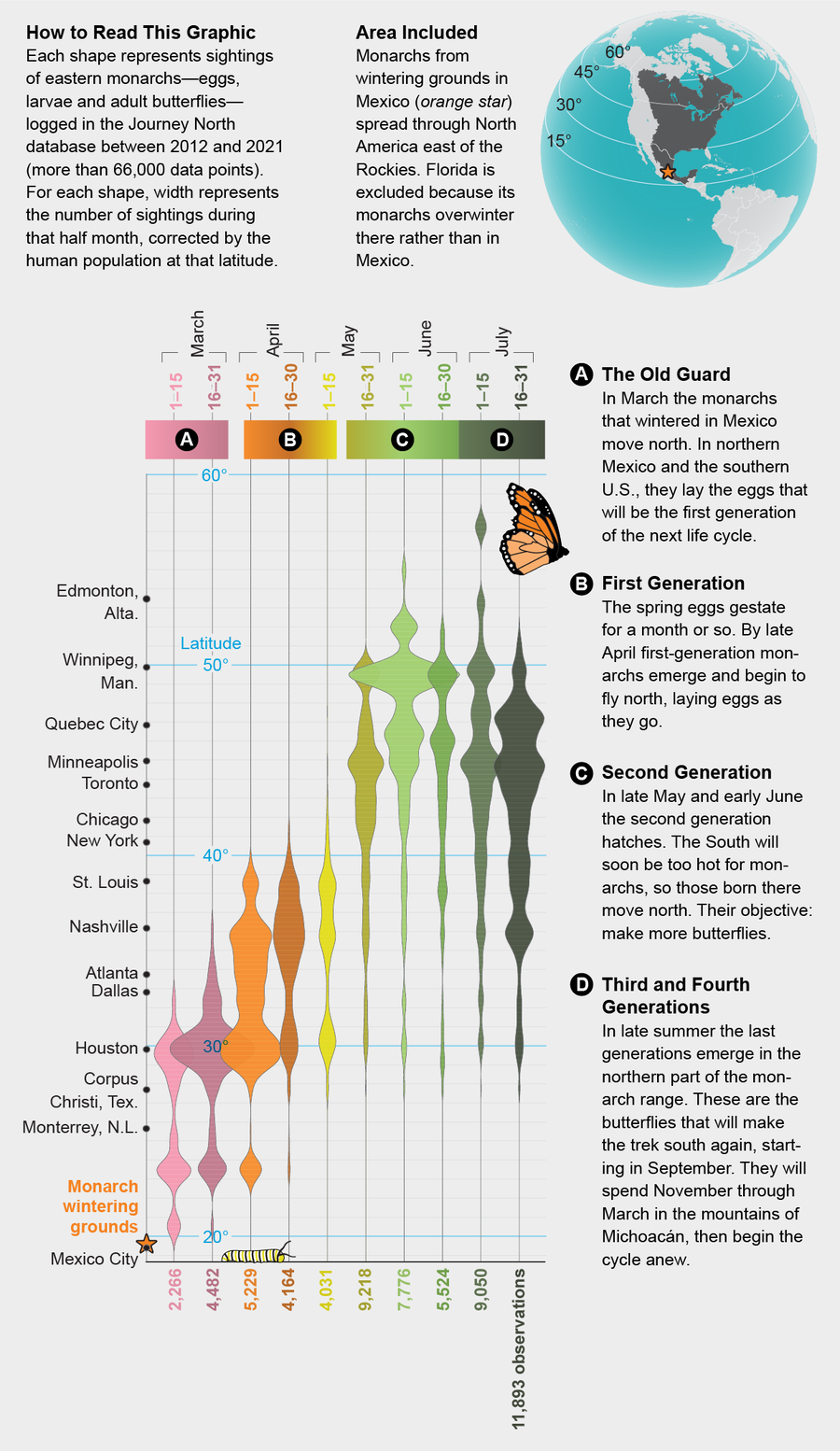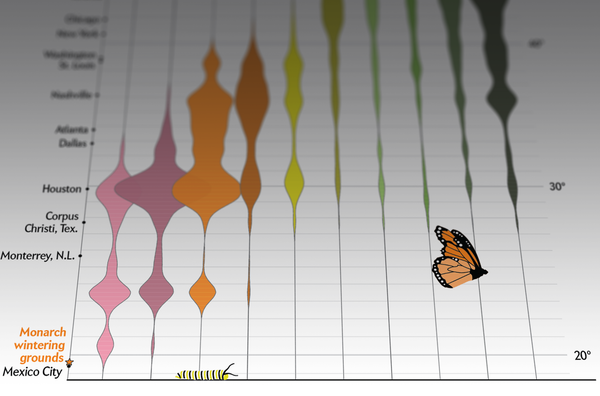On supporting science journalism
If you're enjoying this article, consider supporting our award-winning journalism by subscribing. By purchasing a subscription you are helping to ensure the future of impactful stories about the discoveries and ideas shaping our world today.
It’s spring, and monarchs are on the move. Every year the butterflies leave their dense winter clusters near Mexico City and head for northern latitudes. It will take four months and three generations to get there. Once they arrive, the butterflies will get busy boosting their company enough to survive next year’s winter. It’s a Sisyphean task—eastern monarch numbers have dropped 80 percent in the past 20 years because of habitat degradation (including fewer flowers)—throughout their range, says Iman Momeni-Dehaghi, a biologist at Carleton University in Ottawa. Enter citizen scientists, who have been building databases such as Journey North, which Momeni-Dehaghi recently used to identify where the overwintering generation hatches. The data could help researchers devise more targeted interventions for a species in rapid decline.

Credit: Katie Peek; Sources: Monarch Sightings from Journey North Citizen Science Data (journeynorth.org); Population Data from Columbia University’s Socioeconomic Data and Applications Center (SEDAC)
